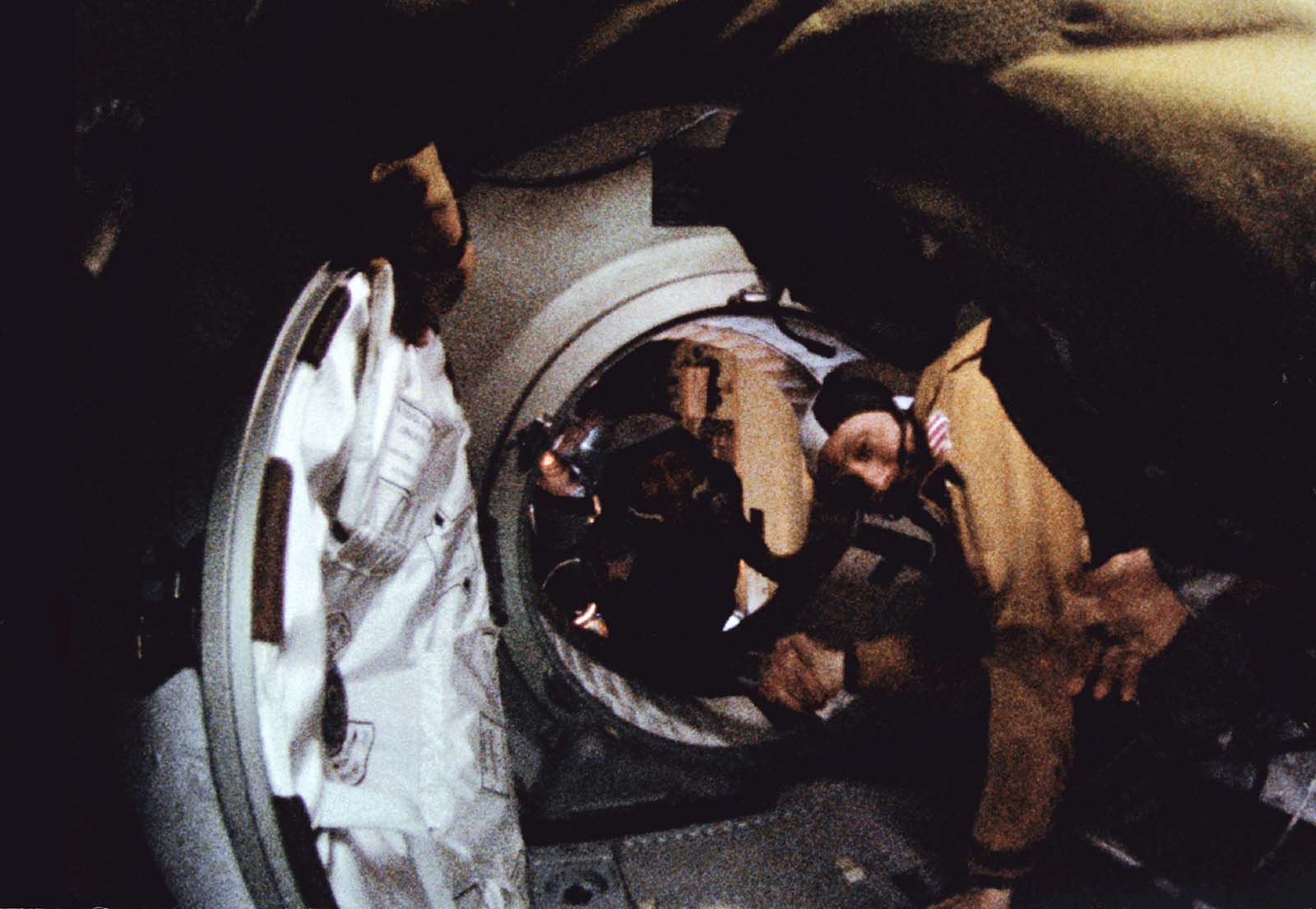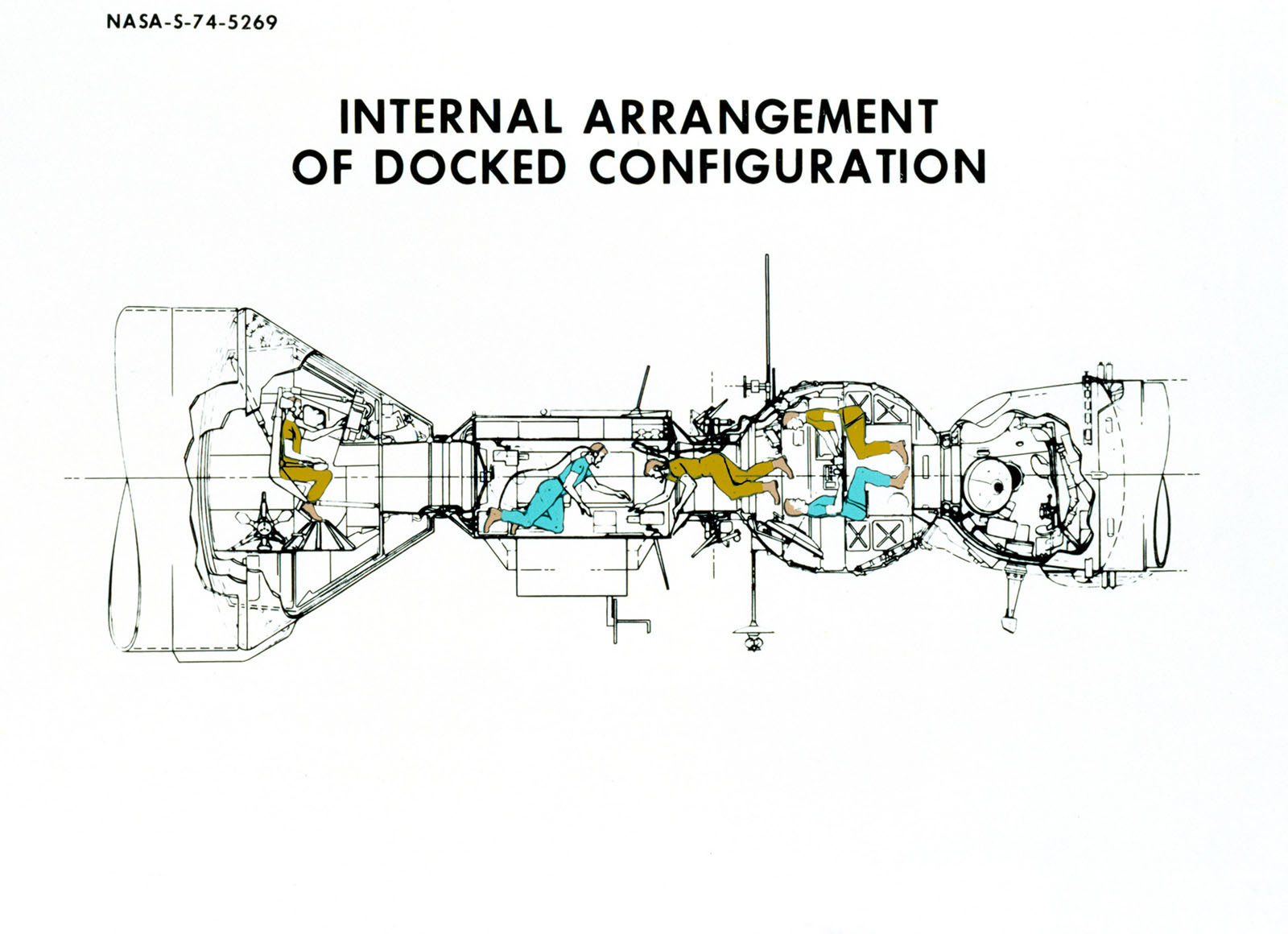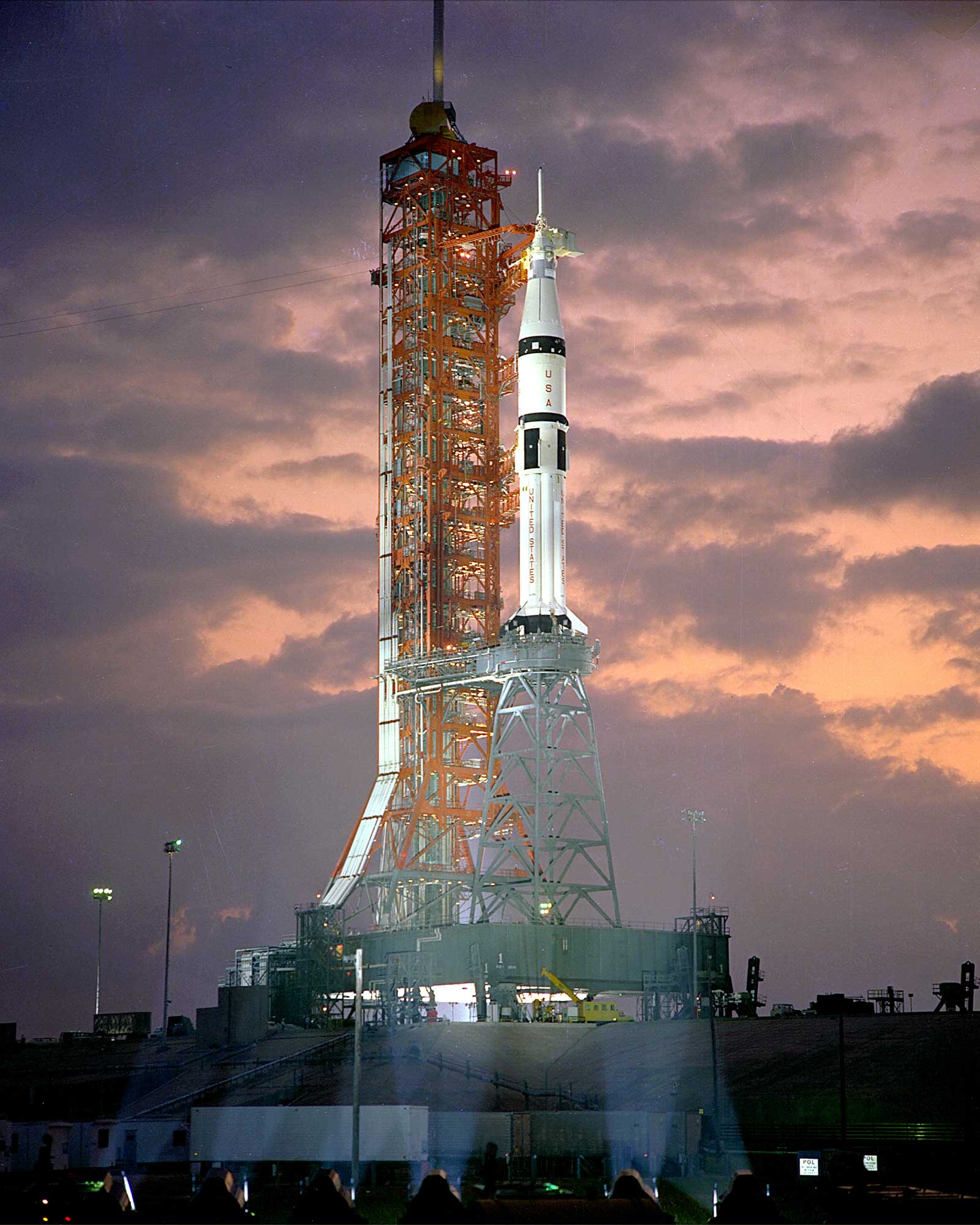Apollo-Soyuz Test Project
15–24 July 1975
Crew: Thomas P. Stafford, Vince D. Brand, Donald K. “Deke” Slayton
The Soyuz 19 and Apollo 18 craft launched within 7.5 hours of each other on 15 July and docked on 17 July. Three hours later, Thomas Stafford and Alexei Leonov exchanged the first international handshake in space through the open hatch of the Soyuz. The two spacecraft remained linked for 44 hours, long enough for the three Americans and two Soviets to exchange flags and gifts (including tree seeds that were later planted in the two countries), sign certificates, pay visits to each other’s ships, eat together, and converse in each other’s languages. There were also docking and redocking maneuvers, during which the Soyuz reversed roles and became the “active” spacecraft. The Soviets remained in space for five days and the Americans for nine, during which time the Soviets also conducted experiments in Earth observation.




